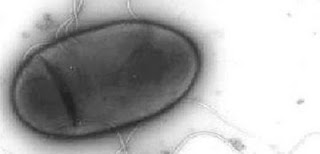BACTERIA FEED ON IRON

A novelty is the discovery of a gram-negative, halophilic, aerobic and mobile bacteria: Halomonas titanicae sp. nov. isolated through 16S rRNA gene sequencing of samples of samples of rust from destroyed areas of the ship Titanic sank in 1912 and currently lying on North Atlantic’s seabed at 3.8 km depht. Researchers believe that this bacterium is capable of damaging oil and gas pipelines underwater. In any case represent a new way of recycling iron from old ships and marine structures. Although the exterior of the Titanic seems solid in reality is highly porous housing a complex variety of bacteria, suggesting that H. titanicae accelerates the corrosion of steel. Cristina Sanchez Porro, Bhavleen Kaur et al (University of Seville and Dalhousie, Canada), argue that H. titanicae is part of the recycling of iron structures at certain depths, but they do not know if the bacteria was on board the Titanic before or after the sinking. One finding that reinforces the idea of Craig Venter to create genetically engineered bacteria for environmental recycling.
BACTERIA SE ALIMENTA DE HIERRO
Una novedad es el descubrimiento de la bacteria gram-negativa, halofilica, aeróbica y móvil : Halomonas titanicae sp. nov. aislada por secuenciación genética 16S rRNA, de muestras exfoliadas de hierro de áreas destruidas del buque Titanic, hundido en 1912, yacente en la actualidad en los fondos marinos a del Atlántico norte a 3.8 km de profundidad. Los investigadores creen que esta bacteria es capaz de dañar instalaciones y tuberías de gas y petróleo submarinos. En todo caso expresan un nuevo modo de de reciclar el hierro de naves viejas y estructuras marinas. Aunque el exterior del Titanic parece solido en realidad es altamente poroso albergando una compleja variedad de bacterias destacando H. titanicae que al parecer acelera la corrosión del acero. Cristina Sanchez Porro, Bhavleen Kaur y otros (Universidades de Sevilla y Dalhousie-Canada), arguyen que H. titanicae forma parte del sistema de reciclaje de estructuras de hierro a ciertas profundidades, aunque desconocen si la bacteria estuvo a bordo del Titanic antes o después del hundimiento. Un hallazgo que refuerza la tesis de Craig Venter de crear mediante ingeniería genética, bacterias con fines de reciclaje medioambiental.
Labels: bacteria feed on iron



.+Photo+Author.jpg)



0 Comments:
Post a Comment
<< Home